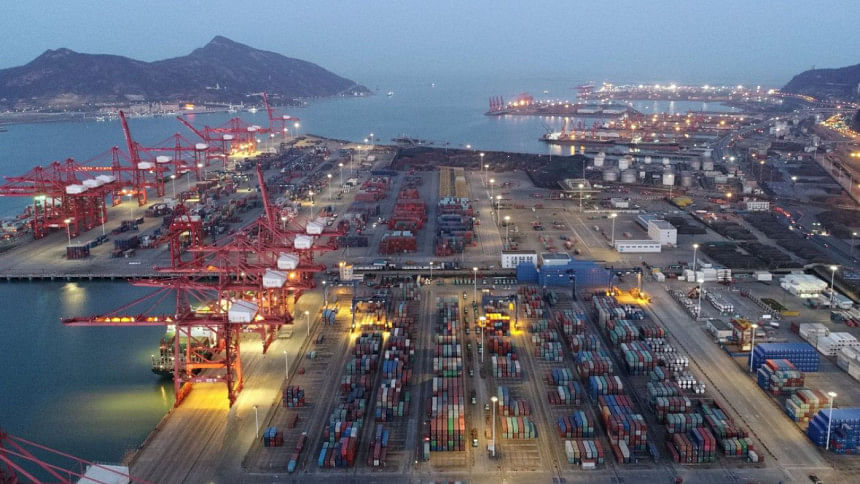Emerging risks for emerging economies

Suddenly it seems that emerging-market economies have gained a respite. Capital flows to these economies dried up in the second half of last year as the US Federal Reserve raised its policy rate for five consecutive quarters and shrank its balance sheet. But in January, the Fed announced a pause, which now looks to be extended: the dot plots of Federal Open Market Committee members currently indicate no rate rises for the remainder of the year. Moreover, the Fed has signaled that "quantitative tightening," the process of allowing treasuries and mortgage-backed securities to roll off its balance sheet, will continue only through September.
This means merciful relief for emerging economies, which have been buoyed by the resumption of capital inflows. A replay of the second half of last year, much less of the 2013 "taper tantrum," now seems unlikely.
In addition, there is the rebound of the Chinese economy. Other emerging markets, linked to China through global supply chains and raw material exports, are highly leveraged on its growth. Thus, they had good reason to worry when Chinese manufacturing activity shrank in February for the third straight month. Chinese exports are down. Car sales are down. As recently as two weeks ago, all was doom and gloom.
We now know that this pessimism was overdone. Manufacturing activity recovered in March, reflecting measures taken by the Chinese authorities. Policymakers are relying more on fiscal stimulus and less on liquidity creation to offset weak demand.
My view, contrary to that of others, is that this is something China can well afford. Government debt is still low by emerging-market standards. More important, the differential between the interest rate and the growth rate, which shapes debt dynamics, is lower than virtually anywhere else in the world.
Consequently, the central government was able to raise the threshold below which no income tax is paid and to add a tax deduction for parental elder care. It had room to cut taxes for small businesses. It can cut the value-added tax (VAT) and spend upward of 1.5 percent of GDP on railways, roads, and other projects, as announced in March.
To be sure, China's corporate debt load is heavy. Total social financing is still expected to grow by 10 percent this year, faster than nominal GDP. Much of this new liquidity is destined for relatively inefficient state-owned enterprises already saddled with bad loans. That said, China remains enough of a controlled economy that the authorities can mitigate its deceleration, as last month's manufacturing rebound indicates.
Relief may also be coming on the tariff front. US President Donald Trump may have hardened his anti-China rhetoric at the behest of his trade representative, Robert Lighthizer, who sees threats as necessary to extract concessions from the Chinese government on intellectual property and technology transfer. There is also the danger of additional US tariffs on other products and sources, such as motor vehicles manufactured in Europe and Mexico.
But Trump's tariff talk is consistently worse than his bite. When other countries refuse to roll over and accept his demands, he has a history of accepting limited concessions and declaring victory, as with the renegotiation of the North American Free Trade Agreement. There is every sign now that a similar cosmetic agreement is in the offing with China.
At the same time, Trump never entirely abandons the tariff threat. Trade conflicts are useful background noise that diverts attention from ongoing political investigations and embarrassments. They make it appear, to the uninitiated and uninformed, that the administration is doing something about slowing US growth.
As a result, Trump's tariff threats will continue to roil global markets and international relations. But they will not culminate in a full-blown tariff war and complete collapse of the multilateral system.
But there remains one significant and serious risk to emerging markets: a US recession. The inversion of the yield curve late last month suggests that investors are now taking this possibility seriously. Some sages at institutions like JPMorgan, which make their living forecasting such events, think there is a significant chance of a recession this year or next.
If a recession does occur, it will be severe, because there will be relatively little US policymakers can and will do about it. US interest rates remain low, giving the Fed little room to cut. And, because the budget deficit has already blown up, there will be less appetite for fiscal stimulus.
Moreover, a US recession would interact with other risks. Trump would look for someone to blame, so the trade war could be back on. In that case, China would find it harder to outgrow its corporate debt problem, which in turn would weaken the world's principal engine of economic expansion.
For this reason, the recent respite for emerging-market economies could be short-lived. Given the uncertainties about US policy and Chinese growth prospects, it is too early to conclude that these countries are out of the woods.
Barry Eichengreen is a professor at the University of California, Berkeley. His latest book is The Populist Temptation: Economic Grievance and Political Reaction in the Modern Era.
Copyright: Project Syndicate, 2019.
www.project-syndicate.org
(Exclusive to The Daily Star)

 For all latest news, follow The Daily Star's Google News channel.
For all latest news, follow The Daily Star's Google News channel. 



Comments